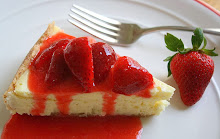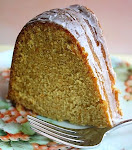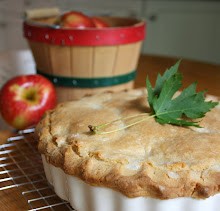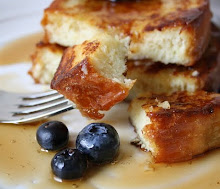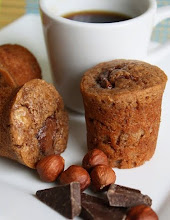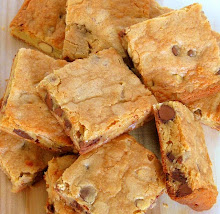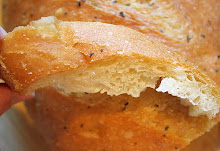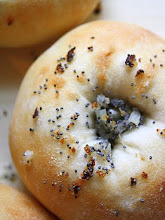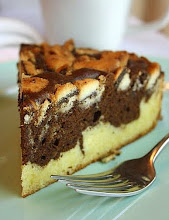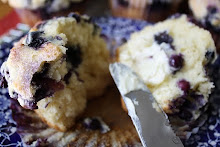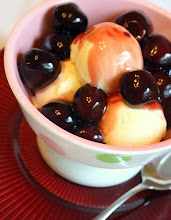It all began about three years ago. One wintery afternoon, with nothing better to do, I took an online survey on one of those market-research sites. The kind of site where they compensate you for a few minutes of your time by giving you points that eventually add up into something like a magazine subscription. Anyway, the survey was all about chocolate--how you use it, where you buy it, what brands you like, and so on.
At the end of the survey another question appeared on the screen, inquiring if I'd be willing to participate in further research on the same topic. Naturally, I clicked yes, as it would never occur to a chocolate junkie to click otherwise. One day later, I received a call from a market research company here in southeastern Michigan. A perky female voice asked me if I'd like to be a research subject in an "in-depth, face-to-face, marketing study" all about chocolate. At that point, I'm pretty sure time stood still. I looked at the phone. Was I having an auditory hallucination? A chocolate study? Were they kidding, I asked? No, this was serious, the voice replied. Count me in, I thought. Gathering my composure, I told the woman I was intrigued and she went on to explain how the study would work.
It would take no more than a couple of hours of my time and they would compensate me with a payment of $135 dollars. So far so good, right? Then she remarked that the study would need to take place in my home. In my home? My little 1948 bungalow?? Yes, she confirmed. At that point I began to wonder if the whole thing was on the up and up. It just seemed awfully far-fetched to me that any company would actually send researchers into someone's house to sit at their kitchen table and gab about the mysteries of chocolate. Was I going to let these folks in the front door, only to be sold into slavery? Would they clobber me over the head and steal all the premium chocolate chips in my pantry? I just didn't know what to make of it.
But after hearing more, and confirming the legitimacy of the company, I agreed to do it and we set up the appointment. My house, 1pm on a weekday, and I should expect four people to show up. At some point in the second half of the appointment, we would all drive to a local store of my choosing--a place where I might typically buy chocolate--and continue our discussion there.
The day of the visit, I was nervous. I'd also been told they'd be filming the entire interview and that they'd ask me to show them where in my house I "like to enjoy chocolate." I tidied the joint up as if it were going to be inspected by the health department. I fussed over what to wear. What does one wear for a chocolate interview? I had no idea, settling on an outfit that was nice but decidedly casual.
And so it commences . . .
They arrived on time. Three women and one man. The first woman was very young and spoke barely a word the entire time; I surmised she must have been a marketing intern who was strictly present to observe. Next was an energetic thirty-something gal who directed the activity--clearly the ring leader. She was followed in by a tall brunette with a kind face, who looked to be about my age; and, finally,there was a plump man well into his fifties with a bushy mustache, who would smile warmly throughout the entire event (no doubt a fellow chocolate lover, I assumed). They were laden with two or three small shopping bags bulging with packaged chocolate--bars, bite size pieces, you name it. We settled at my kitchen table, which is also my dining room table (again the joys of the 1948 bungalow), and the intern pulled out a tiny tripod upon which she attached a small video camera; she focused the lens in my direction. Wasting no time, the ring leader launched right in, peppering me with questions, the first several of which I recall answering rather self-consciously. They all peered at me as if I harbored the secrets of the universe.
What was it that I liked so much about chocolate? How did chocolate make me feel? Did I like any certain kind of chocolate more than another and if so, why? This went on for quite a while. Occasionally the man would remove some chocolate from one of the sacks, silently push a particular piece toward me, gesture for me to unwrap it, and then indicate that I should taste it. What did I think of it? Would I buy it? If not, why not--what was wrong with it? Did the packaging appeal to me? What did the packaging remind me of? Was I familiar with any print or TV commercials for that particular variety of chocolate?
I recall trying some pretty odd flavor combos, perhaps the least appealing of which was a dark chocolate filled with a syrupy banana-flavored substance. Most of the packaged chocolates they'd brought carried mainstream brand names like Hershey, Dove, and Lindt, but some of the more unique and specific candy varieties seemed new and unusual. As we chatted, it became clear at one point that the man and the tall woman were both from out of state, and I realized that they must each represent a major chocolate manufacturer, though when I asked what companies they were associated with they both declined to divulge and coyly redirected the conversation.
The interview continued. Where might I typically be sitting, standing, or reclining in my house when I nibbled a piece of chocolate? Well, I said, I might very likely be curled up on a couch in the living room with something to read, along with a fresh cup of coffee. Would I, they entreated, demonstrate this exact scenario for them? Fully in the spirit of things now, I gamely kicked off my shoes, picked up a magazine, grabbed an empty coffee mug and a piece of their chocolate, and sat in my favorite corner of the loveseat. They filmed this, of course--all of them standing at a safe distance and gazing at me almost misty-eyed, as if I were a mother cheetah in a zoo grooming her newborn cub. Then they wanted to see where I stored the chocolate in my house that I used primarily for baking, so I opened the kitchen cupboard that houses those ingredients and they all leaned in closely as if they were witnessing some sort of anthropological marvel: the middle-aged American woman's baking supplies in their natural habitat--how fascinating!
True to their word, as the interview wound down we all tromped out to their car (something large, black, and shiny) and motored to a gourmet market about a mile or so away. There, I directed them to the chocolate displays and the area of the store where pricey handmade chocolate candies were sold by weight from a glass case. I remember expressing the opinion that I thought Godiva chocolates were beautifully packaged but were not nearly as good as they used to be. At that confession the plump male out-of-towner nodded vigorously in an expression of emphatic agreement; I felt we bonded in that moment. I showed them the heavy Callebaut chocolate blocks I occasionally purchased from the store to use for baking--rough, hefty, untempered shards that were cut from a huge block. They browsed around for a while with studied interest and bought an eclectic selection of several high-end chocolate bars before we all left the store.
Back at my house they asked me to sign a couple of forms, handed me a check to reimburse me for my time, and thanked me warmly for my cooperation.
Then they gave me the entire bag of chocolate they'd just purchased.
All in all, it was an afternoon very well spent, and almost like something from a dream.
Perfectly Velvety Dark Chocolate Brownies . . .
with Milk Chocolate Chips
*This is an original recipe of Jane's, not adapted from any other published source.
(For a printable version of this recipe, click here!)
Line an 8"x8" or a 9"x9" pan with parchment. Preheat your oven to 350 degrees.
2 cups unbleached all-purpose flour
1 scant teaspoon coarse kosher salt
1/2 teaspoon baking powder
1/2 cup of unsalted butter, melted
3 oz. good quality dark chocolate, melted
2/3 cup natural cocoa powder
3/4 cup granulated sugar
2 large eggs, room temperature, lightly beaten to break them up
1 and 1/4 teaspoon vanilla extract
3/4 cup (liquid measure) half & half, room temperature
2/3 cup good quality milk chocolate chips (optional; if you prefer less sweet brownies, leave them out, but keep in mind that the brownie batter is not very sweet to begin with)
In a large bowl, whisk together the flour, salt, and baking powder. Set aside.
In a medium bowl, stir together the melted butter and melted chocolate.
In another bowl, whisk together the sugar and the cocoa powder; add this into the bowl of melted butter and chocolate, stirring well until completely combined. Then add in the eggs and vanilla extract, stirring these in completely. Now add in all of the half & half, stirring until it's all well mixed in. Scrape the bowl with a rubber spatula as needed.
Add all of the wet chocolate mixture into the large bowl of flour and stir just until it's all mixed together and no longer. Pour the chocolate chips into the batter and gently mix them in using the rubber spatula, just enough to distribute them throughout.
Pour all of the batter into your parchment-lined pan, spreading it out evenly. Bake on the middle rack of your oven for about 20 minutes, until the brownies feel somewhat firm on top, and a toothpick inserted in the center emerges looking mostly clean. Let them cool in the pan, on a rack, for about 5 minutes before removing them to finish cooling on a rack.
(If you'd like to comment on this post, or to read any existing posts, please click the purple COMMENTS below.)













































